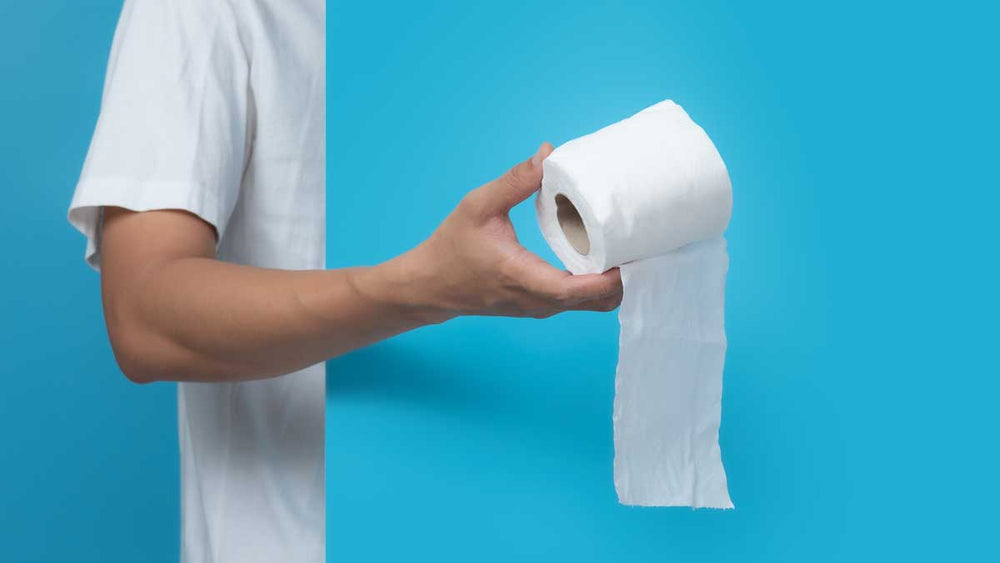Gender Differences in IBS: Understanding Symptoms in Men
If you are familiar with Foodguides, you have seen a lot of articles from contributors on irritable bowel syndrome (IBS). If you are new here, let’s start with a brief introduction to IBS.
Defining IBS and Its Prevalence
There are four main categories of IBS, which are:
- IBS-D: this is mostly diarrhea and abdominal pain
- IBS-C: this is mostly constipation and abdominal pain
- IBS-M: this is alternating diarrhea and constipation and is where the “m” comes about - from mixed
- IBS-U: symptoms vary here and are called IBS-unclassified
Unfortunately, IBS is very common and affects between 25 and 45 million people in the United States. Statistics show that about 2 in 3 individuals with IBS are female, and about 1 in 3 are male.
When looking at my friends and family, I would have to agree that I know more females than I do males who have IBS. Is it because I tend to talk about the not-so-fun stuff (like my stomach hurting) with my female friends, or could there be something else behind the fact that IBS may vary between genders?
These thoughts led me down a rabbit hole, trying to figure out all the whys behind possible differences in IBS for males and females. Here are some of the interesting things that I found.
Gender and IBS: Exploring the Variations
IBS Subtypes and Quality of Life: The Gender Divide
A 2010 meta-analysis comparing symptoms of IBS between genders found that men were likelier to experience IBS-D than women, while women were likelier to report IBS-C and stomach pain. It also found that men tend to have a better quality of life when living with IBS compared to women. These findings were supported in a 2022 cross-sectional study evaluating IBS symptoms, additionally, with fewer reports of nausea, sleeping problems, chronic pain, and psychiatric comorbidities noted for men with IBS compared to women with IBS.
Factors Behind Gender-Based Differences
Exploring Multifaceted Factors: Gender-Based Symptom Variations
A 2018 study from the Journal of Neurogastroenterology and Motility found that there may be several reasons behind IBS symptom differences in males compared to females. They feel the differences may be credited to differences in intestinal microbiota, diet, cultural differences in seeking healthcare, hormones, stress response, and intestinal motor and sensory functions.
Hormones Beyond Females: Male Hormones and IBS
I don’t know about you, but I automatically think of only female hormones when I hear hormones. (I’m not really sure why, but again, I guess we often talk to our female friends about hormones and hormone changes.) However, male hormones are not something to forget about as they can play a big role in IBS.
A study in the American Journal of Gastroenterology showed that middle-aged men who experience IBS were prone to have lower levels of luteinizing hormone compared to men without IBS. Also, IBS symptom severity tended to be inversely related to testosterone, meaning the more testosterone present, the less pain should be present. This may be one explanation for why men may not complain of pain as much as women when ranking pain regarding IBS.
Diagnosis Dilemma: Are Men Being Overlooked?
Seeking Healthcare: The Gender Factor
A 2010 meta-analysis in Alimentary Pharmacology & Therapeutics was very insightful and helped show another point of view. It found that the higher diagnosis of IBS in females was less obvious in the general population. The authors determined this may be because women generally tend to seek doctors' opinions more frequently than men for answers to their symptoms. So, something to think about - is there really a lower frequency of men with IBS, or are there just more men living with undiagnosed symptoms?
Tips for IBS Management: For All Genders
If you or someone you know are living with IBS, regardless of gender, here are a few tips that can help:
- One of the most promising and effective treatments for symptom relief is the Low FODMAP Diet for IBS
- Work on lifestyle changes to help manage your IBS
- Quality Sleep- Sleep issues are common among people living with IBS
- Physical Activity- Movement helps digestion and mood
- Actively find ways to reduce and manage your stress
- Practice self-care & learn relaxation techniques
- Maintain a healthy work-life balance
- Ibs facts and statistics. About IBS. (2023, March 28).
- Adeyemo, M. A., Spiegel, B. M., & Chang, L. (2010). Meta-analysis: do irritable bowel syndrome symptoms vary between men and women?. Alimentary pharmacology & therapeutics, 32(6), 738–755.
- Bureychak, T., Faresjö, Å., Sjödahl, J., Norlin, A. K., & Walter, S. (2022). Symptoms and health experience in irritable bowel syndrome with focus on men. Neurogastroenterology and motility, 34(11), e14430.
- Kim, Y. S., & Kim, N. (2018). Sex-Gender Differences in Irritable Bowel Syndrome. Journal of neurogastroenterology and motility, 24(4), 544–558.
- Houghton, L. A., Jackson, N. A., Whorwell, P. J., & Morris, J. (2000). Do male sex hormones protect from irritable bowel syndrome?. The American journal of gastroenterology, 95(9), 2296–2300.


















Comments
Join The Conversation...